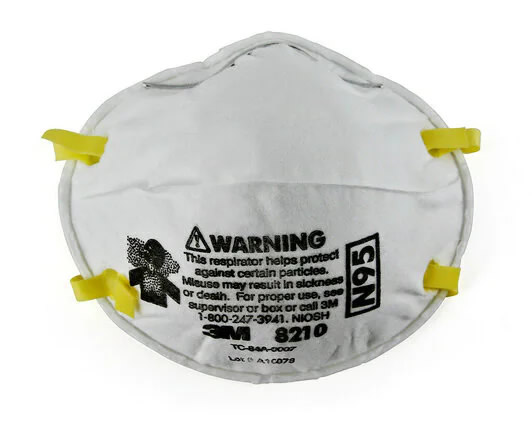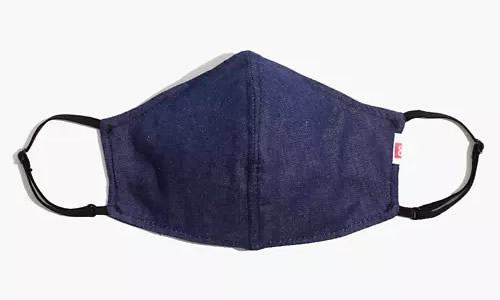
A Comparison of Face Mask Materials at Filtering Aerosol Particulates
Introduction
Throughout the COVID-19 pandemic, face masks have been a critical recommendation for impeding the spread of infection. To accommodate the daily mask requirements of the general public, many consumers have relied on wearing cloth masks for protection in favor of disposable medical masks or N95 respirators already in short supply for healthcare professionals. These cloth masks have been constructed from a variety of materials, often from manufacturers with little to no experience in the medical industry. While any barrier is better than none, the majority of cloth masks have not undergone efficacy testing and the risk factor to those who wear them is unknown.
In an attempt to provide insight, Anresco Laboratories tested a variety of cloth, medical, and N95 respirator masks to demonstrate their effectiveness at preventing the transmission of aerosol particulates. The analyses performed include particle filtration efficiency (PFE) and bacteria filtration efficiency (BFE) in accordance with ASTM F2100 specifications, both primary analyses typically used to quantify the resistance of mask and filter materials to penetration.
Particle Filtration Efficiency (PFE)
The Particle Filtration Efficiency (PFE) test, also called “The Latex Particle Challenge,” measures the percentage of non-viable particles blocked by the tested material. Non-viable particles (e.g. dander, dust, dirt, smoke, fibers) refers to particles that do not contain a living microorganism but act as transporters for viable particles (e.g. bacteria, fungi, spores, virus). A higher PFE corresponds to a greater percentage of non-viable particles unable to pass through the tested material.
The PFE analysis was performed by generating aerosol particulates 0.1µm (microns) wide and filtering through the material at approximately 1 cubic foot per minute (CFM). The particles were then counted with a submicron laser particle counter.
Bacterial Filtration Efficiency (BFE)
The Bacteria Filtration Efficiency (BFE) test measures the percentage of bacterial particles blocked by the tested material. A higher BFE corresponds to a greater percentage of bacteria aerosols unable to pass through the tested material.
The BFE analysis was performed by introducing live staphylococcus aureus aerosol particulates (ranging between 1-5µm (microns) wide) into a chamber and using a vacuum to draw the particles through the material. The BFE percentage was calculated by counting the colony forming units (cfu) that passed through.
Results
Based on our results, the face masks below have been ranked from most to least effective in blocking non-viable and bacteria aerosol particulates. Each face mask is linked to the site where it was purchased.
Face Mask |
BFE |
PFE |
|---|---|---|
 3M™ Particulate Respirator 8210, N95 3M™ Particulate Respirator 8210, N95 |
99.9% | 98%+ |
 Rubicon Disposable Masks Rubicon Disposable Masks |
99.9% | 97.3% |
 Sportiqe Face Mask with 2.5mm Filter Sportiqe Face Mask with 2.5mm Filter |
99.9% | 70.6% |
 Hedley & Bennett Wake Up & Fight Mask Hedley & Bennett Wake Up & Fight Mask |
98% | 43.9% |
 100% Cotton 4-Layer Mask 100% Cotton 4-Layer Mask |
99.9% | 35.4% |
 Bycc Bynn Bandana Bycc Bynn Bandana |
34% | 6.6% |
 LANVO Neck Gaiter LANVO Neck Gaiter |
0% | 14% |
Conclusion
In conclusion, both medical masks (N95 and standard disposable mask) demonstrated high effectiveness at blocking aerosol particulates and offered greater protection than any of the cloth masks tested.
In terms of cloth masks, the sportiqe mask with PM 2.5mm activated carbon filter demonstrated high effectiveness at blocking larger bacteria aerosols and above moderate effectiveness at blocking smaller non-viable aerosols. The PM 2.5 filter is named as such due to its deisgn to filter airborne particulate matter smaller than 2.5 microns. Its encasement in the sportique mask likely increased its level of protection and would be a useful addition to any cloth mask.
The bandana and neck gaiter, both top rated products of their kind on Amazon, demonstrated poor effectiveness at blocking aerosol particulates and offered an almost non-existent barrier.
In summary, many non-medical cloth masks offer a significant barrier of protection against both non-viable and bacteria aerosol particulates. When greater protection is required, most cloth masks do not offer the same level of protection as N95 or disposable medical masks. Bandanas and neck geiters should likely be avoided unless layered with other protective barriers.
While our results provide a general insight into the effectiveness of these materials, a larger sample size would be needed to strengthen these conclusions.